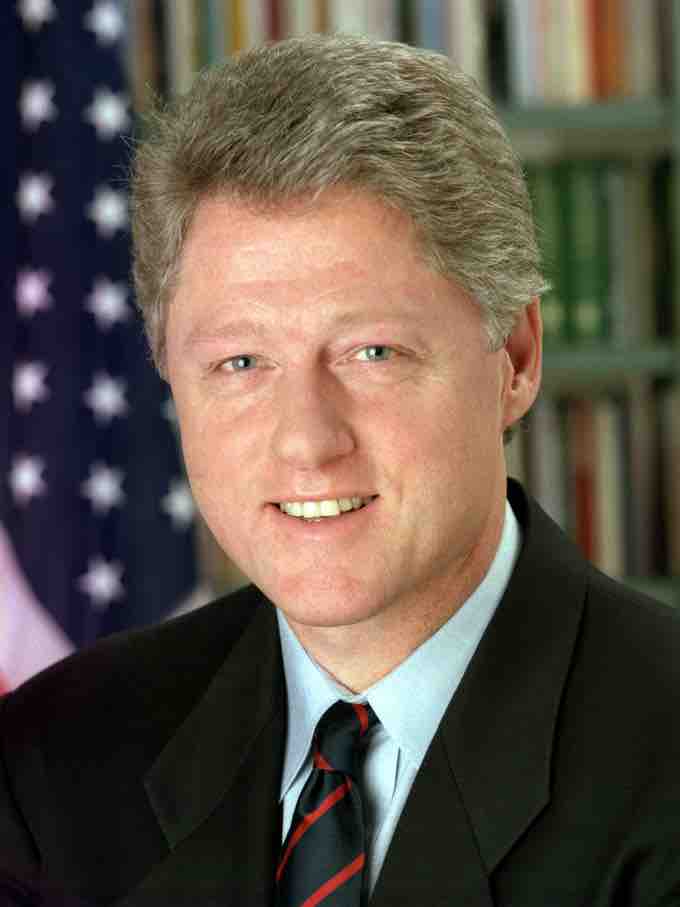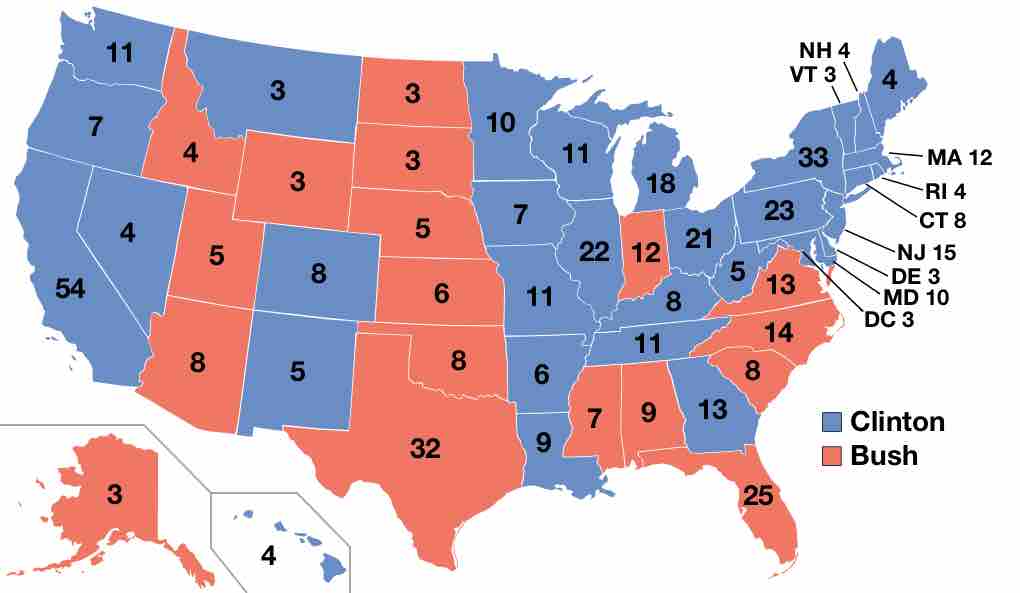Overview
The 1992 United States presidential election had three major candidates: incumbent Republican President George H. W. Bush, Democratic Arkansas Governor William Jefferson (Bill) Clinton, and independent Texas businessman Ross Perot. In the election, Clinton won a plurality in the popular vote and a wide Electoral College margin.
The Campaign
George Bush
By 1992, many had come to doubt that President George H. W. Bush could solve America’s problems. He had alienated conservative Republicans by breaking his pledge not to raise taxes, and some faulted him for failing to remove Saddam Hussein from power during Operation Desert Storm in the Gulf War. The economy was also in a recession, contributing to discontent among many Americans. Furthermore, despite living much of his adult life in Texas, he could not overcome the stereotypes associated with his privileged New England and Ivy League background, which hurt him among working-class Reagan Democrats. Bush's perceived greatest strength—that of foreign policy—was considered much less important following the dissolution of the Soviet Union and the relatively peaceful climate in the Middle East resulting from the defeat of Iraq in the Gulf War.
Conservative political columnist Pat Buchanan challenged Bush for the Republican nomination, and shocked political pundits by finishing second, with 37% of the vote, in the New Hampshire primary. Bush responded by adopting more conservative positions on issues in an attempt to undermine Buchanan's base. Once he had secured the nomination, Bush faced his challenger, Democrat and Governor of Arkansas William Jefferson "Bill" Clinton.
Bill Clinton
Clinton chose U.S. Senator Al Gore (a Democrat from Tennessee) as his running mate. Selecting fellow Southerner Gore went against the popular strategy of balancing a Southern candidate with a Northern partner. Gore, however, did balance the ticket in other significant ways, as he was perceived to be strong on family values and environmental issues, while Clinton was not. Additionally, Gore's similarities to Clinton allowed the latter to push some of his key campaign themes, such as centrism and generational change. During his campaign, Bill Clinton described himself as a New Democrat, a member of a faction of the Democratic Party that, like the Republicans, favored free trade and deregulation. He tried to appeal to the middle class by promising higher taxes on the rich and reform of the welfare system.

William Jefferson Clinton, America's 42nd President
Bill Clinton defeated George H.W. Bush in the 1992 presidential election.
Ross Perot
In early 1992, the race took an unexpected twist when Texas billionaire H. Ross Perot launched a third party bid, claiming that neither Republicans nor Democrats could eliminate the deficit and make government more efficient. His message appealed to voters across the political spectrum disappointed with both parties' perceived fiscal irresponsibility. He addressed some of the public's main concerns at the time, including the federal deficit, professional politicians, and anti-NAFTA (the North American Free Trade Agreement) sentiments. Perot later bowed out of the race for a short time, then reentered. Clinton originally lead in the polls, until Perot reentered and tightened the race significantly. Nearing election day, polls suggested that the race was a dead-heat.

Ross Perot
In 1992, Ross Perot got the highest percentage of the popular vote of any Third Party candidate since Theodore Roosevelt in 1912.
Results
On November 3, Clinton won the election by a wide margin in the Electoral College, receiving 43% of the popular vote against Bush's 37%. Perot won 19% of the popular vote, one of the highest totals for a third party candidate in US history, drawing equally from both major candidates according to exit polls. Bush received 168 electoral votes to Clinton's 370. It was the second largest electoral vote shift in American history (517 vote shift), after Jimmy Carter's victory in 1976 (560 vote shift). It was also the first time since 1968 that a candidate won the presidency despite earning under 50% of the popular vote. In the entire country, only Washington, D.C. and Clinton's home state of Arkansas gave the majority of its votes to a single candidate; the rest were won by pluralities of the vote. After three consecutive Republican landslides, the 1992 election's results represented a momentous realignment in national politics, as the Democratic Party picked up new support in the Northeast, the Great Lakes region, and California while carrying only four states in Clinton's native South.
Bush's 37.4% was the lowest percentage total for an incumbent president since William Howard Taft in 1912 (at 23.2%; the 1912 election had also been a three-way race between Taft, Woodrow Wilson and Theodore Roosevelt). It was also the lowest percentage for a major-party candidate since Alf Landon received only 36.5% of the vote in 1936. Meanwhile, Perot's nearly 19% of the popular vote made him, in terms of the popular vote, the most successful third-party presidential candidate since Theodore Roosevelt in the 1912 election.

Electoral College results, 1992
Presidential election results map. Red denotes states won by Bush/Quayle, Blue denotes those won by Clinton/Gore.